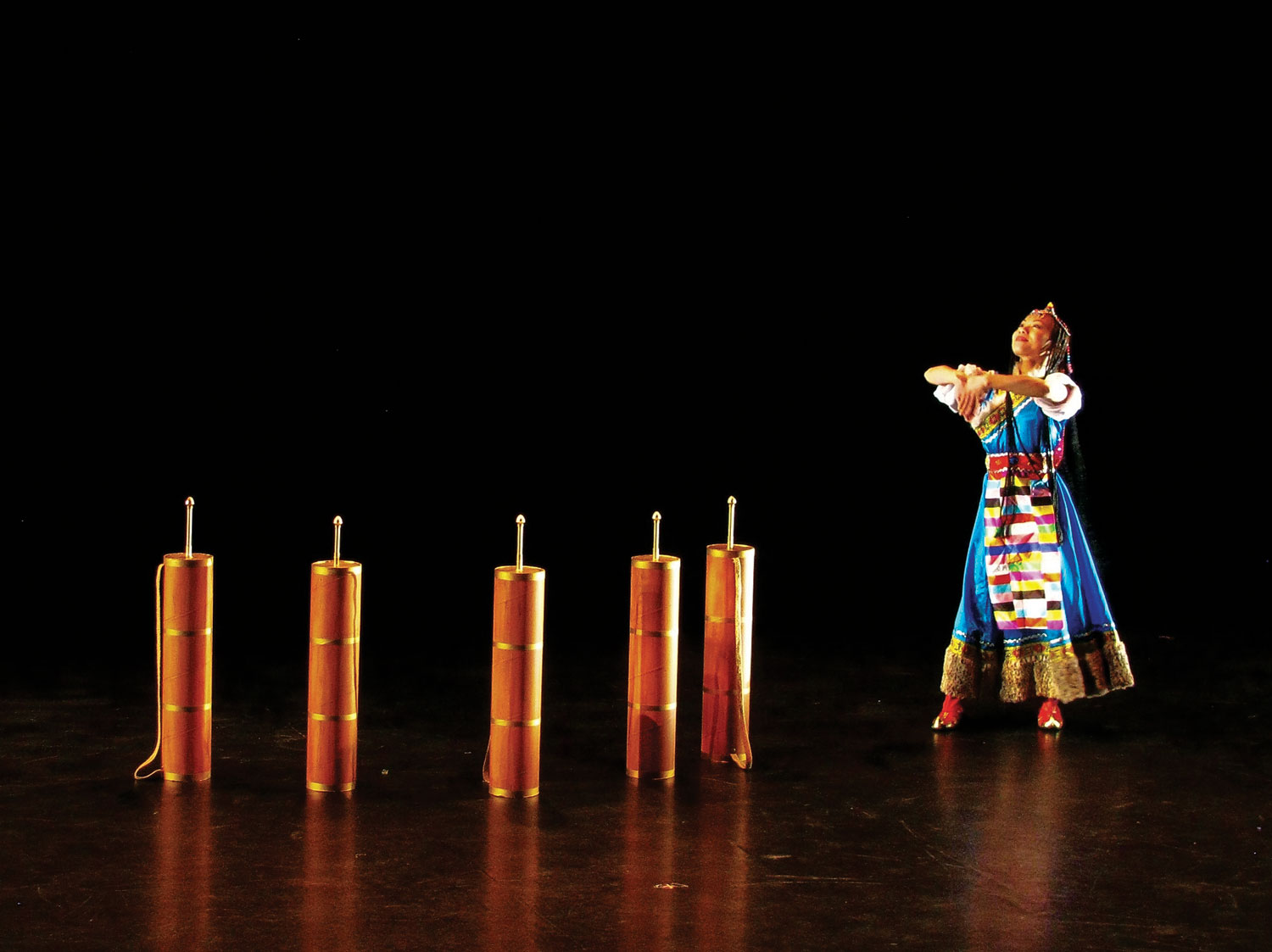Iqra Azhar
Contributor
A spotlight reveals a young man poised in a green churidar kurta outfit with bells around his ankles. In the very first moments, the dancer captures his audience’s attention with slow and controlled greetings, smiling at individuals. Then, just as spontaneously, he speeds up without missing a beat, tap or twirl.
Faster and faster he spins, without losing balance or fluidity. Halfway through the piece, the hair on my arms is sticking up. I pull my jacket tight and can’t help but smile back at a student who has no connection to South Asia except this dance. He is a kathaka.
The performance took place at “York Cares: An Evening of Dance for Pakistan Flood Relief.” Chad Walasek, an MA student at York’s graduate school of dance, decided to plan the fundraiser while he was researching for his upcoming trip there.
“As a researcher, I felt like I [would] be taking from Pakistan – you know, ideas, interviews, things that will benefit Western knowledge and my own personal career,” he said. “I wanted to give some- thing back.”
On Oct. 21, in partnership with graduate students and alumni, a spectacular show was put on at the McLean Performance Studio Theatre in the Accolade East building to raise funds for Oxfam Canada’s relief efforts in flood-ravaged Pakistan.
The planning committee and roster of performers also consisted of Paromita Kar, a PhD in dance studies; Krista Antonio, an undergraduate student of the Dance Students Association; and Dorothy de Val, the director of the graduate program in dance. Some students also volunteered to perform, such as Newton Moraes, a contemporary Brazilian dancer; Claudia Aguirre, a flamenco dancer; and others who came forward over the following weeks or were invited.
“It seemed as though there were a lot of artists who wanted to do their part to support the cause,” Walasek said. “And all of them either attend York as a graduate student or are an alumnus or are a student of an alumnus.”
Chad will be going to Pakistan from January to March 2011 to research the evolution of kathak, South Asian classical dance, in that country – how the politics and domestic conditions of that country have shaped a practice that has been dominated by India and Indian notions of dance. Walasek last worked in Pakistan in 1998 and 1999.
Walasek’s interest in kathak de- veloped over time from an embed- ded groovy nature and sense of cultural tradition to exchange trips and first-hand experiences watch- ing his teachers dancing, telling stories through movement.
Kathak originated in Taxila, a UNESCO world heritage site about 20 miles northwest of Islamabad and Rawalpindi. Although Taxila was primarily a centre for Hindu and Buddhist learning, it was home to many civilizations throughout history, and now urban neighbourhoods, ancient monuments, signs of the Grand Trunk Road and relics of Shah-built Mughal-era gardens can be seen in various areas in and around Taxila.
It was in Taxila that the basic instructions of kathak dance were first etched into stones. Imagine a university-like centre of learning through which traders passed into and out of Afghanistan and China. Thousands of years ago, nomadic groups would perform stories, mostly of mythological or moral value, in temple courtyards or village squares. These performers were called kathakas. Like a sophisticated theatrical production, the kathakas added music, facial expressions and hand gestures to embellish their storytelling.
During the Mughal era, Persian culture influenced the kathak performance and made it into a highly skilled art. Much of the storytelling was lost and, instead, timed rhythm and geometric movement based on mathematics was introduced. The main distinguishing characteristic of kathak is that it is performed straight-legged, whereas other classical dances like Bharatanatayam are done on a bent angle. Kathakas wear bells around their ankles and their costumes are usually churidaar style outfits, skinny pajama- like clothing, which are often illustrated in Mughal paintings.
Some sub-genres include flamenco and kathak fusions and collaborations, which arose due to similarities between the two styles’ basic movements and structure.
Ultimately, Walasek used the evening not only to showcase a diverse range of dances and York dancers, but also to spotlight an underappreciated art form from a country which is now in need of extraordinary financial support.
The committee succeeded at raising about $1,200 for Oxfam. The organization was chosen in part due to its reputation of working closely with local Pakistani partners on projects in Sindh, Punjab and Khyber Pakhtunkwa.
Also an avid tabla player, Walasek hopes to find a career path which will incorporate all of his main interests in dance, music and cultural research. Until then, he will continue to perform in a cultural tradition that, though its origins are old, is still strong today.




